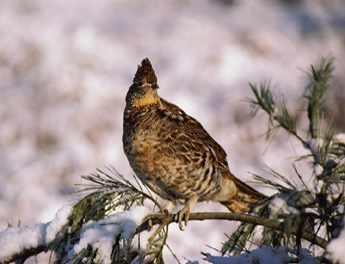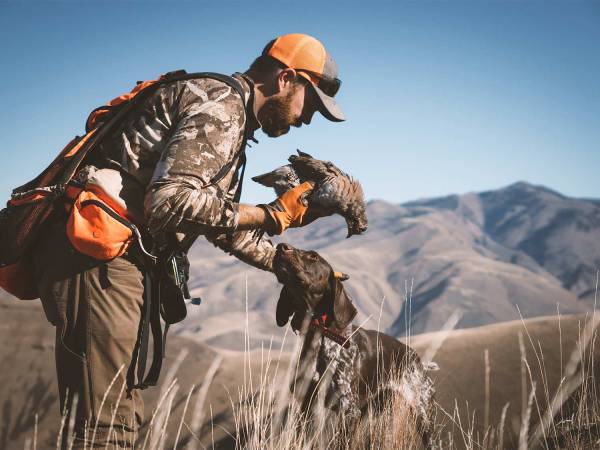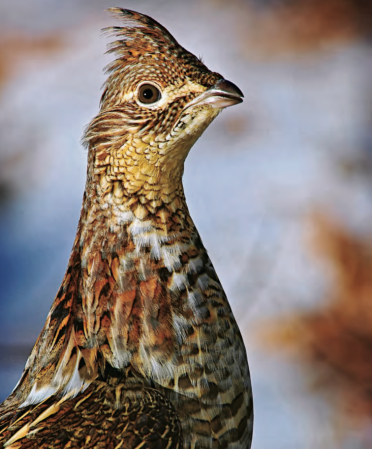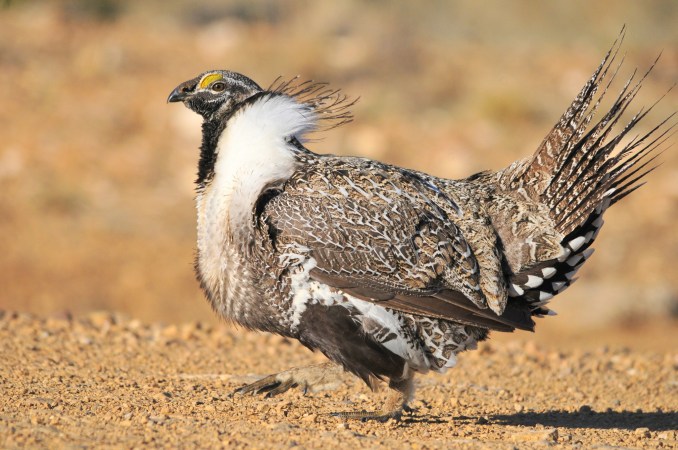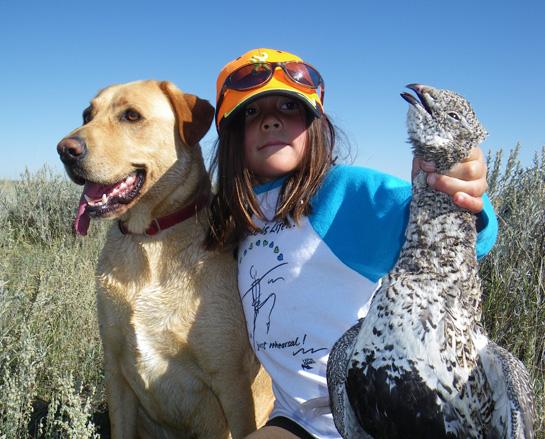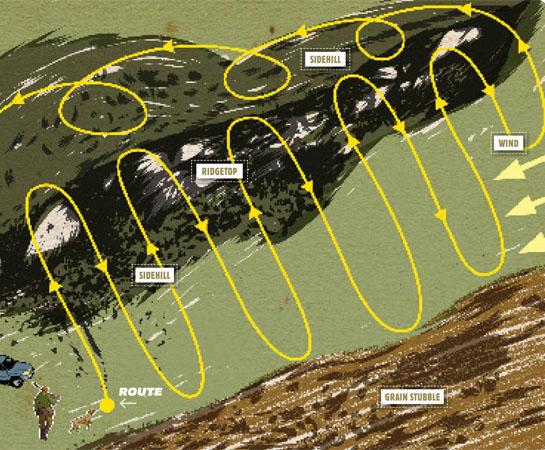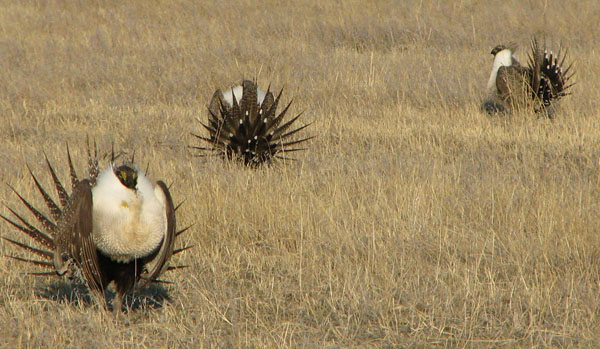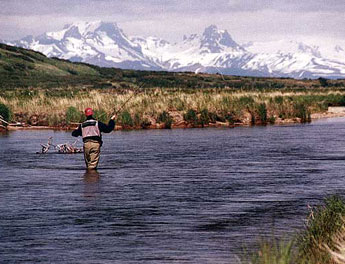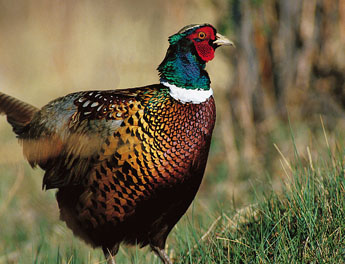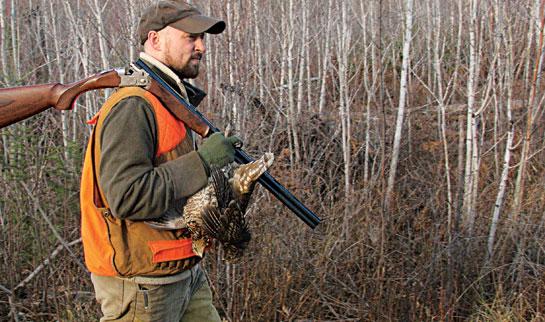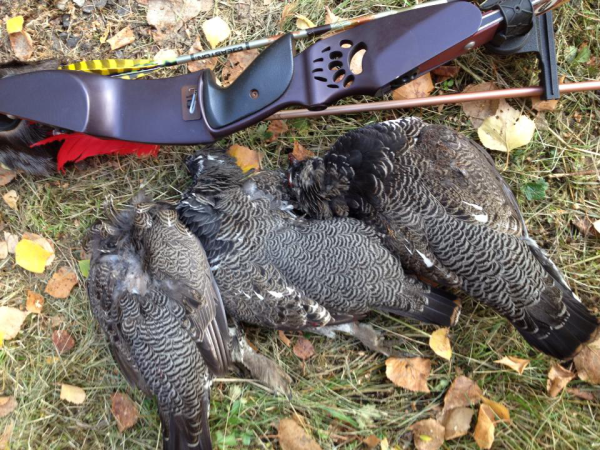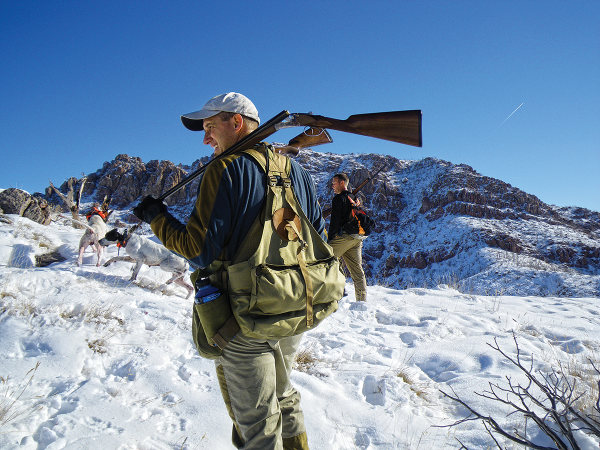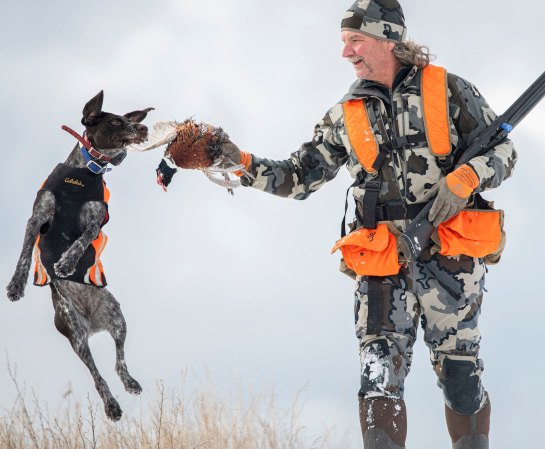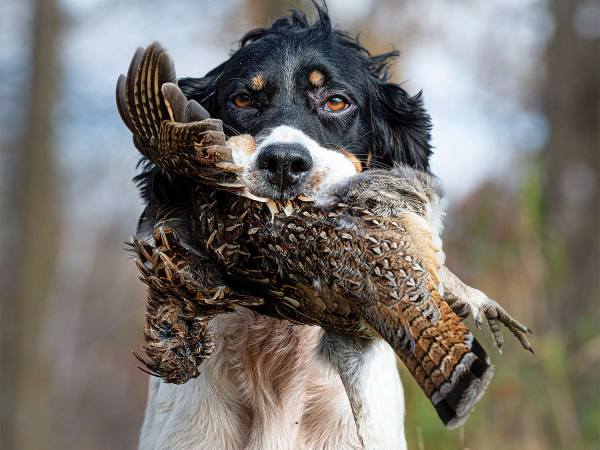At 13,000 feet, the world is an unforgiving place. Your lungs work overtime and your muscles protest with each step you take. You wonder why you’re there, but then your dog suddenly dashes ahead and puts a flock of birds to air, and you know. It’s the challenge of the unique landscape and the ptarmigan that draw you to this hostile mountaintop.
For many years, a buddy and I would head to the country above timberline in the Colorado Rockies each fall. We eagerly anticipated the annual ritual in which we’d try for three Western grouse in one day. With luck, we’d shoot a limit of white-tailed ptarmigan in the high country, then jump in my pickup and drive 75 miles to a spot loaded with sagebrush and serviceberries, where we’d try to limit out on blue grouse and sage grouse. More often than not we weren’t successful at collecting all three birds, but the thrill was in the chase as we attempted to complete our little slam.
One of the attractions of this hunt was the lack of other hunters. My buddy and I were both from the East, where bird hunting has a large and storied following. Head into grouse cover there, and chances are good you’ll encounter other sportsmen. In the West, however, we seldom saw others, perhaps because it offers an enormous amount of land to hunt and birds are widely scattered. Big game is also the primary quarry in the West; far fewer hunters go after birds.
During four consecutive years of ptarmigan hunting in Colorado, I saw only one party of other hunters, a group led by Tam Scott, a judge from Aspen. Tam and his pals, like my buddy and me, were passionate bird hunters and would do whatever it took to find birds-even if it meant suffering at high altitudes.
Blue Grouse
It’s easy to understand why a great many hunters don’t particularly care for traipsing around for birds above timberline, but I’d always wondered why species that are easier to go after don’t have much appeal.
Take blue grouse, for example, which range throughout the Rockies and into Canada. These birds are often incredibly numerous during periods of high cycles, but very few people seem to hunt them. I love to go after them in aspen stands located in a draw surrounded by large stands of sagebrush. Birds are commonly concentrated in those depressions because the areas are cool and moist. My favorite strategy, where roads are conveniently located, is to dump a hunter or two off on a ridge. From there they can slowly hunt their way down to a lower road, to be picked up at the end of the day.
[pagebreak] Spruce Grouse
Fool’s hens are perhaps the least hunted of all our birds, primarily because they often refuse to fly when startled. Technically known as spruce grouse or Franklin’s grouse, these birds are too bold, too trusting. They’ll often stand on the forest floor and allow a person to approach within a few feet. In fact, it’s not uncommon for people to dispatch them with sticks or rocks, though you need to check the legality of this in areas where you hunt. The answer to their refusal to fly is to use a dog to make the flush.
Both blue and spruce grouse are typically hunted during long, liberal seasons. Hunters who focus on them with enthusiasm have no trouble finding plenty of birds, unless the cycle is down and grouse are scarce. If that’s the case, you might do well to find a bird or two during a day’s hunting.
Ptarmigan
Across the north country, ptarmigan often live and die without ever seeing a human. Most are taken by caribou hunters who happen to bring along a shotgun. There are three subspecies: rock, willow and white-tailed ptarmigan. My Michigan writer buddy, Tom Huggler, is the only person I’ve ever known to make a trip exclusively for these birds. An ardent bird hunter, he takes his dog with him, both of them flying in small planes.
When bird cycles are up, action can be ffast and furious, but count on plenty of walking when they’re down. These birds often refuse to fly and might walk maddeningly in front of you as you try to get them to flush. All you can do is keep pressing, sometimes dashing toward them. Bag limits are liberal and seasons are long. If you plan a caribou trip, a couple members of your party should bring along shotguns.
[pagebreak] Sage Grouse
The sage grouse is also low on the priority list, although I’ve seen places near towns where a few parties of hunters look for them on opening day. After that, it’s rare to find anyone hunting the big sagebrush country they inhabit.
Sage grouse are the biggest grouse in the United States; a big male will tip the scales at close to 5 pounds and have a 3-foot wingspan. They don’t fly fast but they do flush explosively out of cover. Most newcomers to sage-grouse hunting tend to shoot ahead of them because the birds fly a bit more slowly than they appear to. My favorite strategy is to start the morning hunting around water holes. Look for cattle: Their presence usually betrays a water source. If you’re unfamiliar with the area you’re hunting, you might walk for miles and never find water-or a grouse.
Since these birds are unique among grouse in that they have no muscular gizzards, you won’t find them feeding in agricultural areas with grain crops. Instead, they feed mostly on sagebrush and other soft vegetation. For that reason, a mature bird tastes similar to an old sagebrush bush, and it takes some creativity in the kitchen to render it edible. Field-dressing the birds immediately after they hit the ground helps some, but not a whole lot.
Sage grouse are declining in some areas, mostly due to a loss of sagebrush. This Western plant has been eradicated in some areas because of land development and because of the practice of planting grass to increase livestock forage. Long-term droughts have also affected sagebrush, and a mysterious malady in northeastern Utah is killing off tens of thousands of acres of it.
[pagebreak] Ruffed Grouse
The ruffed grouse, which has plenty of ardent fans in the Great Lake states and the Northeast, is also alive and well in the West. In fact, the partridge is the most widely distributed native game bird, ranging from Labrador to Alaska. In the West, however, it would lose a popularity contest, overshadowed by the exotic chukars and Huns. It’s always baffled me that a ruff will burst out of cover in its Eastern haunts but walk around boldly in the West. Perhaps it’s because they’re pursued more extensively in the East. I hunt this bird, which has always been my favorite, in lowland brushy areas. As in the Eastern coverts, a close-working dog is a big asset in the West.
The next time you make a big-game hunt in the West or North country, take along a shotgun. There are very few places where there’s no bird action, and it’s likely you’ll have most of the country to yourself. What more could a bird hunter ask?
For information on Jim Zumbo’s books, visit www.jimzumbo.com.
